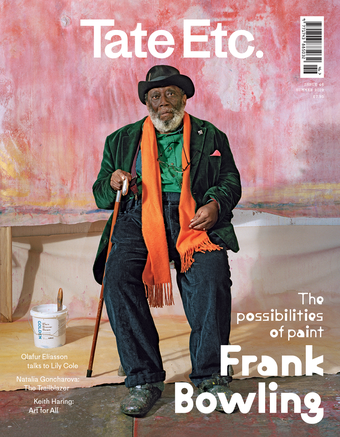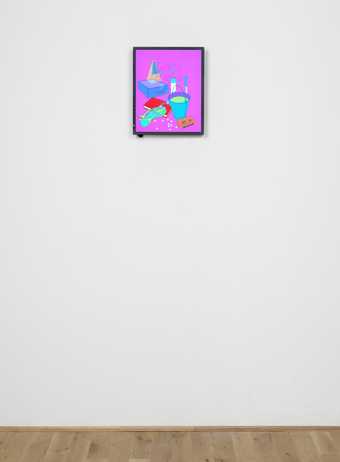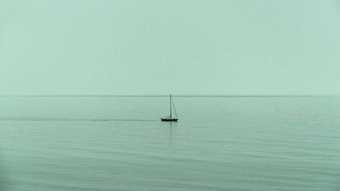
In case you missed it, 6 April was the tenth anniversary of annual ‘Slow Art Day’, an initiative to encourage modern, attention-deficient museum-goers to look more closely at art. Participants found a local event – including one at Tate Modern – and looked at five pre-selected works for between five and ten minutes. Afterwards, said groups reassembled to discuss their experiences over lunch.
Be honest, when did you last look at even one painting, let alone five, for ten minutes in one sitting? Researchers writing in the journal Psychology of Aesthetics, Creativity, and the Arts in 2017 found that visitors to the Art Institute of Chicago spent an average 28.63 seconds looking at artworks. That’s an average increase of 0.089375 seconds year-on-year since 2001, when, according to previous findings, visitors to the Metropolitan Museum of Art in New York spent 27.2 seconds looking at ‘great works of art’.
Why does this matter? While introducing In Praise of Slow, the movement’s slow bible since 2004, journalist Carl Honoré claims that slowness is ‘about seeking to do everything at the right speed. Savouring the hours and minutes rather than just counting them’. Slowly, this idea of slowness is spreading into art. Arden Reed’s 2017 book Slow Art: The Experience of Looking, Sacred Images to James Turrell establishes ‘slow art’ as a new aesthetic field that encompasses multiple practices – from photography to video, performance to painting, sculpture to installation. Rather than being a group of aesthetic objects, however, for Reed it names ‘the dynamic, intimate encounter between object and observer’. ‘Artworks,’ he continues, ‘wait mutely – patiently – for us to animate them. As beholders, we actually perform artworks, as though they were musical scores. Then (dead, static) images become events. Observed over time, paintings behave like slow-motion moving pictures.’
Slow art, then, seems less concerned with the agency of the artwork itself than with the necessity of devoted attentiveness and favourable conditions for that dynamic, intimate experience. It is the social spaces evacuated by religious gazing that, Reed argues, art has come to fill in secular societies. While this idea of art displacing the sacred is nothing new, the benefits of arts and culture on health and wellbeing is, in Britain, and is central to the All-Party Parliamentary Group on Arts, Health and Wellbeing’s findings in their 2017 report Creative Health. In an anxious age of uncertainty, art, we learn, can help us feel good.
The overlap between slowness and wellbeing is one of the transformative virtues of art extolled by Rebecca Chamberlain, who earlier this year led a sold-out first ‘Slow Looking Tour’ of the recent Pierre Bonnard exhibition at Tate Modern. Chamberlain, a psychology lecturer at Goldsmiths, University of London, explained that slow looking ‘intersects with ideas around mindfulness and wellbeing’, comparing it to ‘sensory mindfulness meditation’ where ‘your focus of attention is in the moment and not on external ideas or thoughts’.
The single greatest recent art historical account of attentive looking I can think of is TJ Clark’s 2006 book The Sight of Death. Subtitled ‘An Experiment in Art Writing’, Clark recorded his reactions to Poussin’s Landscape with a Calm 1650–1 and Landscape with a Man Killed by a Snake 1648 almost daily between 20 January and 24 April 2000. For Clark, attentive repeated looking and writing was an attempt at encountering the work without, as far as possible, the presumptions of a lifetime spent studying art. ‘I want,’ he ventures, ‘to write a reaction to my two paintings, not a theory of them.’
Later, revising these notes for publication, he was careful ‘not to lose hold of the first movement of things as it appears in the notebooks, the tripping from day to day’. Each time he returns, he notices something else; the light changes, and then another thing: people come in and out of the room, which provokes ideas, directing his attention to another thing, and so on. Slow looking takes place among the daily contingencies of the galleries.
Clark, I suspect, would recoil in horror at the framing of his experiment as ‘slow art’ practice. Why should painting be framed by the initiative of ‘Slow Art Day’ when it has long been a medium that eludes uncomplicated meanings and neat explanations, encompassing – sometimes contradictorily – registers of fast and slow?
So, next time you visit a gallery, slow down and look. It’s when you pass the 28.63-second mark that things really start to happen.
Jonathan P Watts is a writer who lives and works in Norwich.
Illustration by Nicolas Chuard, an artist living and working in Amsterdam.



